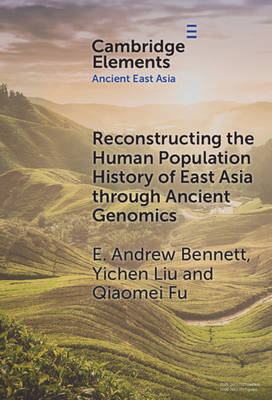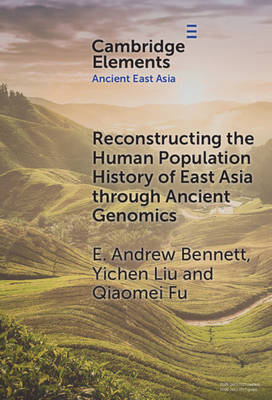
Door een staking bij bpost kan je online bestelling op dit moment iets langer onderweg zijn dan voorzien. Dringend iets nodig? Onze winkels ontvangen jou met open armen!
- Afhalen na 1 uur in een winkel met voorraad
- Gratis thuislevering in België vanaf € 30
- Ruim aanbod met 7 miljoen producten
Door een staking bij bpost kan je online bestelling op dit moment iets langer onderweg zijn dan voorzien. Dringend iets nodig? Onze winkels ontvangen jou met open armen!
- Afhalen na 1 uur in een winkel met voorraad
- Gratis thuislevering in België vanaf € 30
- Ruim aanbod met 7 miljoen producten
Zoeken
Reconstructing the Human Population History of East Asia through Ancient Genomics
E Andrew Bennett, Yichen Liu, Qiaomei Fu
€ 104,95
+ 209 punten
Uitvoering
Omschrijving
East Asian population history has only recently been the focus of intense investigations using ancient genomics techniques, yet these studies have already contributed much to our growing understanding of past East Asian populations, and cultural and linguistic dispersals. This Element aims to provide a comprehensive overview of our current understanding of the population history of East Asia through ancient genomics. It begins with an introduction to ancient DNA and recent insights into archaic populations of East Asia. It then presents an in-depth summary of current knowledge by region, covering the whole of East Asia from the first appearance of modern humans, through large-scale population studies of the Neolithic and Metal Ages, and into historical times. These recent results reflect past population movements and admixtures, as well as linguistic origins and prehistoric cultural networks that have shaped the region's history. This title is also available as Open Access on Cambridge Core.
Specificaties
Betrokkenen
- Auteur(s):
- Uitgeverij:
Inhoud
- Aantal bladzijden:
- 90
- Taal:
- Engels
- Reeks:
Eigenschappen
- Productcode (EAN):
- 9781009517058
- Verschijningsdatum:
- 9/01/2025
- Uitvoering:
- Hardcover
- Formaat:
- Genaaid
- Afmetingen:
- 152 mm x 229 mm
- Gewicht:
- 290 g

Alleen bij Standaard Boekhandel
+ 209 punten op je klantenkaart van Standaard Boekhandel
Beoordelingen
We publiceren alleen reviews die voldoen aan de voorwaarden voor reviews. Bekijk onze voorwaarden voor reviews.











